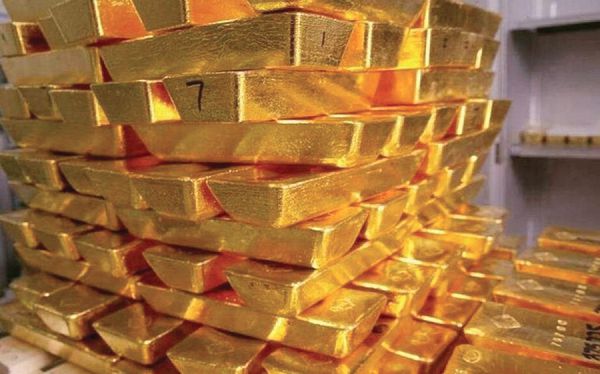Gold futures rose, extending their best quarterly rally in more than a year as concern over China’s economic outlook weighed on global equities and industrial metals.
Bullion hit a six-month high, nearing $1 300 an ounce after a report showing a contraction in China manufacturing renewed wild gyrations across equity markets, with Europe and Asia’s slumping, boosting demand for haven assets. Factory gauges in Italy and Poland also sank.
The dimming demand picture in China, the world’s largest base-metals user, pushed copper to its biggest loss in two weeks while an index of 70 mining companies slid.
Gold is rising on “more safe-haven buying interest amid a still very wobbly US stock market,†a senior analyst at Kitco Metals, Jim Wyckoff said in a note to clients, “There was also some weaker economic data coming out of the European Union, to also un-nerve traders and investors.â€
Bullion surged in the final quarter of 2018 as investors positioned themselves for a global slowdown, with fewer rate hikes expected from the US Federal Reserve.
Worldwide holdings in gold-backed exchange-traded funds have jumped. Major parts of the US government will remain shuttered for a 12th day as President Donald Trump meets with congressional leaders from both parties at a White House briefing Wednesday on border security.
Gold futures for delivery in February delivery rose 0.2 per cent to settle at $1 284.10 an ounce at 1:34 p.m. on the Comex in New York after touching $1 291 the highest since mid-June.
Last month, the price posted the biggest quarterly increase since March 2017. Spot gold climbed as much earlier as 0.5 per cent before erasing gains.
The same growth concerns that are boosting demand for gold as a haven are eroding support for industrial metals.
Copper for three-month delivery at the London Metal Exchange fell as much as 2.2 per cent to $5 831 a metric ton, the cheapest since September.
Lead, aluminium and zinc also declined, while nickel and tin advanced.
The Bloomberg Industrial Metals Subindex that tracks copper, aluminium, zinc and nickel slid as much as 1.7 per cent to an almost two-year low.
â€Risk appetite continues to decline following weak Chinese PMI data and the U.S. government shutdown- Safe haven assets are up,†analysts at TD Securities including Bart Melek said in a note.
Credit: Bloomberg





